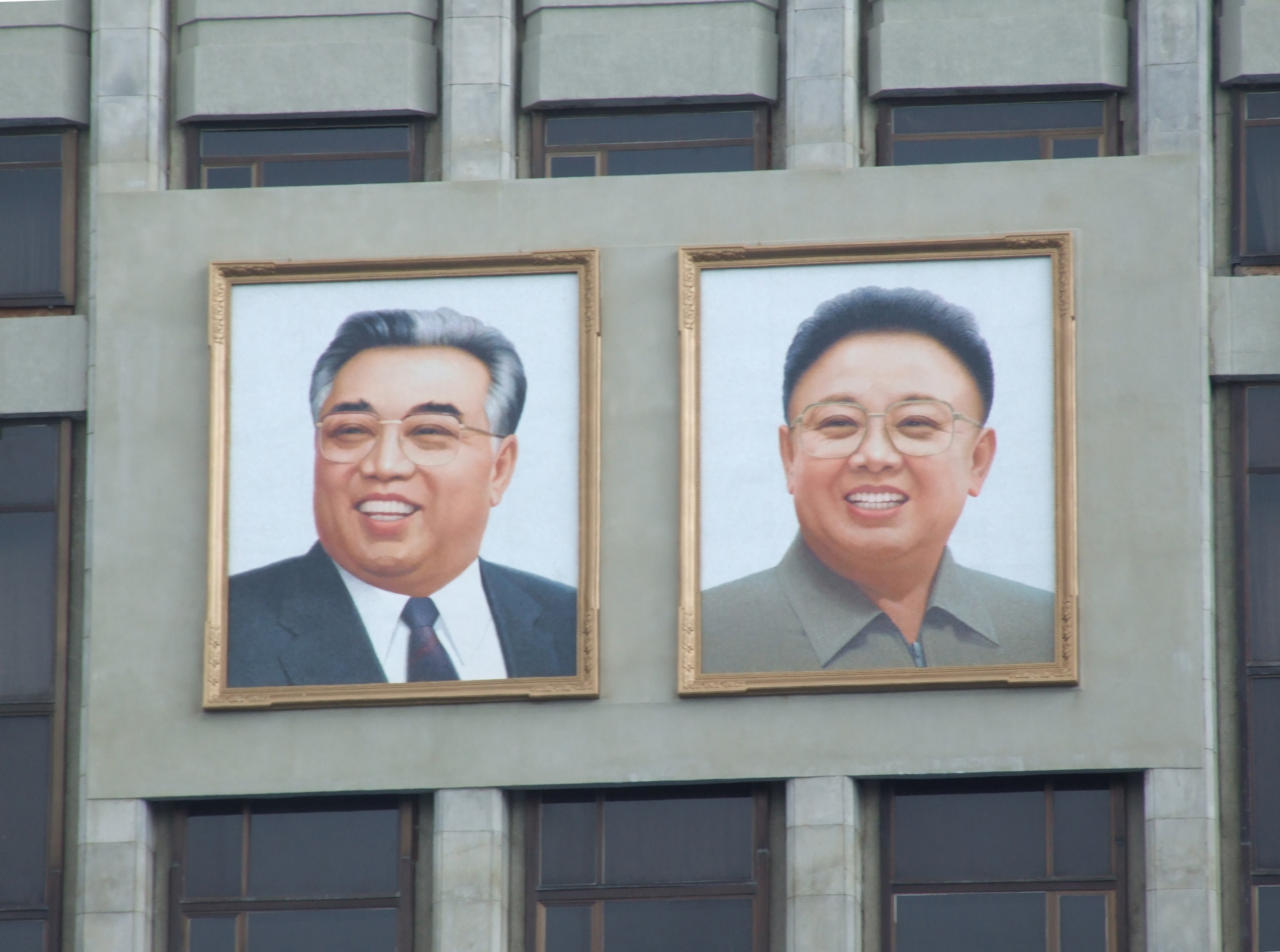
The Cult of Personality in North Korea
By Andrew Sandweiss
[divider]
[dropcap]I[/dropcap]n North Korea, citizens adorn their jackets with pins of the great leaders, such as Kim Il Sung and Kim Jong Il. Political dissenters are nonexistent. And, surprisingly, there is real loyalty for both former leaders. The most visible expression of this devotion, however, comes through two portraits, one for each of the former leaders, found in nearly every room in the Democratic People’s Republic of Korea (DPRK).
Citizens regard them with the highest respect. A woman who would save her portraits rather than her grandmother from a burning building was to be praised. The portraits themselves are everywhere–from subway cars to living rooms. With this cult of personality and these stern images as a reminder, what was the effect on the population?
Becki Enright, a decorated travel writer, states that “every North Korean is required to have those two pictures in their house.” She added that “those two pictures are upheld as the most important things in your house.” Due to restrictions on tourism within North Korea, it is difficult to determine the effect of the portraits on the population because the government strictly controls tours for foreigners. Enright reports that “the real North Korea is what they [the government] are trying to hide from you.”
Enright told me, the cult is, “absolutely everywhere….You walk into an apple factory, and the oil painting on the wall is humongous and it’s of Kim Jong Il out in the apple orchards.” Enright recalls that when taking pictures of statues of the two leaders, “You have to take a picture of that statue in its entirety. You can’t zoom in and take a picture of the face. So there are all these rules about the photography of the statues.”
Kim Il Sung, the first leader of North Korea, was the real mastermind behind the present state of the DPRK. Dr. James Person, coordinator of the North Korea International Documentation Project at the Woodrow Wilson International Center for Scholars, explains that in the years following the Korean War, several debates emerged in the ruling party over development strategies. According to Dr. Person, Kim Il Sung was a, “megalomaniac,” who, “didn’t really take kindly to debate and discussion in the party.” Nevertheless, these debates stifled discussion among government officials.
North Korea’s first leader discouraged debates by publicly ostracizing dissenters and, at the same time, created a, “narrative of the true revolutionary tradition for Korea,” a tradition that heavily involved himself and his family. As this tradition deepened in the 1950s and 1960s, so did the cult. By 1967, Kim Il Sung had eliminated pluralism and any form of democratic contribution to government with his “monolithic ideological system”.
Then Kim Il Sung’s cult of personality exploded. Suddenly, even his grandmother became a symbol of revolutionary ideals. The USS Sherman, which had gone aground in North Korea several decades before, was now explained to have been attacked by none other than Kim Il Sung’s grandfather. Kim Jong Il, the first leader’s son, began to be lauded and revered. Today, according to Dr. Person, one sees, “demonstrations of real affection. The cult has been so masterfully cultivated that there was a genuine feeling of loss,” when both leaders died.
According to Dr. Person, the idea of portraiture is, “something borrowed from other cults of personalities”, such as Stalin and Mao. Dr. Person adds that these portraits were not unique to communist societies, as Park Chung-hee, dictator of South Korea, had his portrait put up around the same time. What is unique is that North Korea has turned these portraits into “the family dynasty.” Kim Jong Il is now found next to Kim Il Sung’s portrait. Dr. Person believes that Kim Jong Un’s portrait may appear soon.
Who is a true believer, and who is feigning their love for the leaders? Dr. Person stated that “It’s hard to say, we have such limited access to the North Korean people and to the country.” As Enright states, “hero worship is all around them all the time and it’s obviously monitored….You wear the Kims, the Kims are in your house–you bow to them. They’re everywhere. And that’s the general rule of North Korea. They’re everywhere.”
[hr]
Andrew Sandweiss is a freshman in Trumbull College. Contact him at andrew.sandweiss@yale.edu.